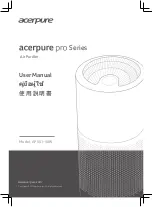
TTJ-0198 (10/97)
(Page 8 of 64)
HEAT LOAD FORM
The heat load form, Page 9, may be used by servicing
personnel to determine the heat loss of a conditioned
space and the ambient winter design temperatures in
which the unit will heat the calculated space.
The upper half of the form is for computing the heat loss
of the space to be conditioned. It is necessary only to
insert the proper measurements on the lines provided
and multiply by the given factors, then add this result for
the total heat loss in BTU/Hr./°F.
The BTU/Hr. per °F temperature difference is the 70°F
inside winter designed temperature minus the lowest
outdoor ambient winter temperature of the area where
the unit is installed. This temperature difference is used
as the multiplier when calculating the heat loss.
The graph shows the following:
Left Hand Scale
Unit capacity BTU/Hr. or heat
loss BTU/Hr.
Bottom Scale
Outdoor ambient temperature,
base point.
Heat Pump Model
BTU/Hr. capacity heat pump will
deliver at outdoor temperatures.
Balance Point
Maximum BTU/Hr. heat pump
will deliver at indicated ambient
temperature.
Below is an example using the heat load form:
A space to be conditioned is part of a house geographi-
cally located in an area where the lowest outdoor ambi-
ent winter temperature is 40°F. The calculated heat loss
is 184 BTU/Hr./°F.
Subtract 40°F (lowest outdoor ambient temperature for
the geographical location) from 70°F (inside design tem-
perature of the unit) for a difference of 30°F. Multiply
184 by 30 for a 5500 BTU/Hr. total heat loss for the cal-
culated space.
On the graph, plot the base point (70°) and a point on
the 40°F line where it intersects with the 5500 BTU/Hr.
line on the left scale. Draw a straight line from the base
point 70 through the point plotted at 40°F. This is the
total heat loss line.
Knowing that we have a 5500 BTU/Hr. heat loss, and
we expect that our heat pump will maintain a 70°F in-
side temperature at 40°F outdoor ambient, we plot the
selected unit capacity BTU/Hr. of the unit between 35°
and 60° on the graph and draw a straight line between
these points. Where the total heat loss line and the unit
capacity line intersect, read down to the outdoor ambi-
ent temperature scale and find that this unit will deliver
the required BTU/Hr. capacity to approximately 30°F.
Содержание YL24J35A
Страница 7: ...TTJ 0198 10 97 Page 7 of 64 COOLING LOAD ESTIMATE FORM...
Страница 9: ...TTJ 0198 10 97 Page 9 of 64...
Страница 14: ...TTJ 0198 10 97 Page 14 of 64...
Страница 26: ...TTJ 0198 10 97 Page 26 of 64...
Страница 27: ...TTJ 0198 10 97 Page 27 of 64...
Страница 28: ...TTJ 0198 10 97 Page 28 of 64...
Страница 29: ...TTJ 0198 10 97 Page 29 of 64...
Страница 30: ...TTJ 0198 10 97 Page 30 of 64...
Страница 36: ...TTJ 0198 10 97 Page 36 of 64...
Страница 37: ...TTJ 0198 10 97 Page 37 of 64 WIRING DIAGRAM FOR MODELSYS13J33 YM18J34A YL24J35A...
Страница 39: ...TTJ 0198 10 97 Page 39 of 64...
Страница 40: ...TTJ 0198 10 97 Page 40 of 64...
Страница 46: ...TTJ 0198 10 97 Page 46 of 64...
Страница 47: ...TTJ 0198 10 97 Page 47 of 64...
Страница 52: ...TTJ 0198 10 97 Page 52 of 64...
Страница 53: ...TTJ 0198 10 97 Page 53 of 64...
Страница 57: ...TTJ 0198 10 97 Page 57 of 64...
Страница 58: ...TTJ 0198 10 97 Page 58 of 64...









































